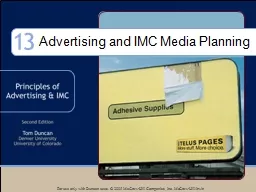PPT-Copyright © 2013 by The McGraw-Hill Companies, Inc. All ri
Author : olivia-moreira | Published Date : 2016-07-23
McGrawHillIrwin Service Recovery The Impact of Service Failure and Recovery How Customers Respond to Service Failures Service Recovery Strategies Fixing the Customer
Presentation Embed Code
Download Presentation
Download Presentation The PPT/PDF document "Copyright © 2013 by The McGraw-Hill Com..." is the property of its rightful owner. Permission is granted to download and print the materials on this website for personal, non-commercial use only, and to display it on your personal computer provided you do not modify the materials and that you retain all copyright notices contained in the materials. By downloading content from our website, you accept the terms of this agreement.
Copyright © 2013 by The McGraw-Hill Companies, Inc. All ri: Transcript
Download Rules Of Document
"Copyright © 2013 by The McGraw-Hill Companies, Inc. All ri"The content belongs to its owner. You may download and print it for personal use, without modification, and keep all copyright notices. By downloading, you agree to these terms.
Related Documents














